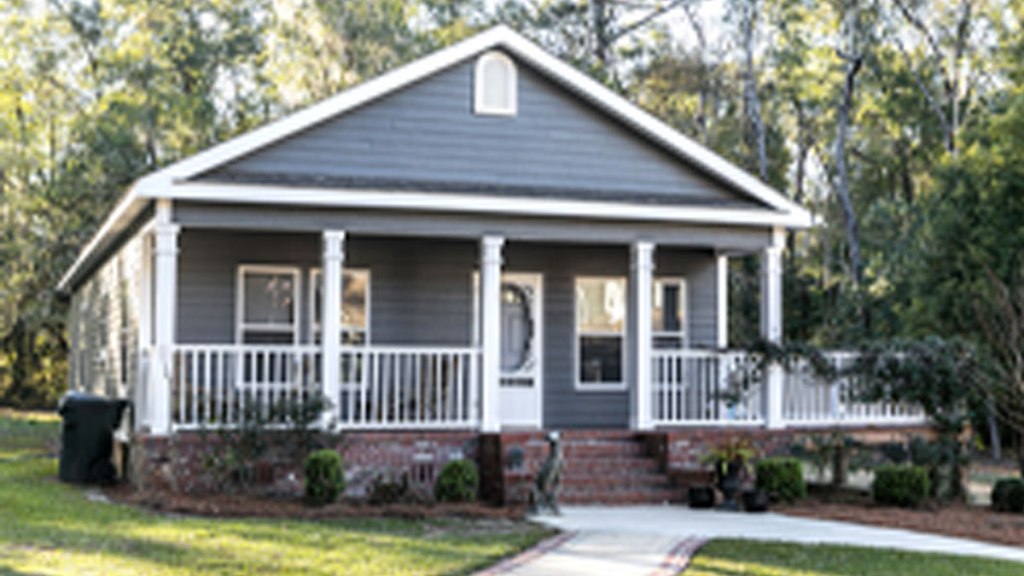As the 118th Congress begins, we return to a divided government in Washington. The American public will be looking to Washington for bi-partisan initiatives and real accomplishments. One of the prime areas of opportunity is affordable manufactured housing homeownership.
Last year was challenging for housing and mortgage markets. For the first time in many years, we experienced falling home prices, in part due to skyrocketing mortgage rates which almost doubled from around 3.5% a year ago to nearly 7% today.
Federal policymakers should take note of the fact that manufactured housing is the most affordable homeownership option available for low and moderate-income families in America. The average income of a manufactured housing homebuyer is around $50,000, while the average income of a buyer of a site-built home is over $100,000. Manufactured homes are often less expensive to own than rent.
There are actions federal agencies can take to help. Last May, the Department of Energy (DOE) released manufactured home energy standards that would add thousands of dollars to the average price of each new home, when they are scheduled to take effect this May. These standards were not developed with any real input from HUD, which has exclusive statutory authority for manufactured home construction and safety standards nationwide, through the HUD Code.
The annual homeownership costs of the new DOE requirements far exceed annual energy savings, and the HUD Manufactured Housing Consensus Committee found that portions of the standards are unworkable. DOE should delay its effective date, while it works with HUD to develop more balanced standards.
FHA, Fannie Mae and Freddie Mac can help. Personal property loans, which make up most of the manufactured home loans, are loans for manufactured homes sited in manufactured home communities, on other leased land, or on owned land not pledged on the loan. But while FHA, Fannie and Freddie combined are responsible for over two-thirds of all new home loans nationwide, they financed only three (FHA) personal property manufactured homes last year.
These three mortgage programs can also take steps to improve appraisal accuracy for so-called CrossMod homes, which offer more amenities at more affordable prices.
Congress can help. Manufactured home communities — also known as land-lease communities — are a critical model for the delivery of affordable manufactured homes, with half of the new manufactured homes currently being placed in such communities.
UMH Properties, a nationwide owner of 134 manufactured home communities in 10 states with approximately 25,600 developed homesites, has a front-row seat to the efforts nationwide to preserve communities in which affordable manufactured homes are sited.
A key component of our national affordable homeownership strategy must be to preserve aging manufactured communities. Many are in need of significant repairs but are owned by mom-and-pop operators without the capital necessary to carry out critically needed renovations.
Our national strategy to promote homeownership affordability should encourage qualified manufactured community owners with the capital resources to buy aging communities, carry out deferred maintenance and infrastructure, and preserve the communities for the low and moderate homeowners living there.
A prototype of this is a community UMH Properties purchased in 2013 called Holiday Village, in Tennessee, which serves a mix of 300 manufactured homeowners and renters. At the time of our purchase, many homes were abandoned, streets were in deplorable conditions, sewer lines were collapsed, water lines were corroded and crumbling, and the playground was abandoned and dangerous.
UMH made the significant capital investments needed to correct these problems and maintain the community. Rents increased only nominally over the following nine years, commensurate with the cost of the work to renovate the community – and still very affordable. UMH invests over $70 million a year in new rental homes and capital improvements to improve manufactured home communities like this and restore them as desirable places to live.
Recently, we have had success in raising funds for these critical investments through the use of Opportunity Zones, a 2017 program that creates investment tax incentives for areas local officials designated as economically depressed.
Opportunity Zone tax incentives offer investors tax deferral and relief from recognizing capital gains that are reinvested within 180 days in these economically depressed Opportunity Zones. This program has been successful.
Building on that track record, its bi-partisan sponsors, Sen. Cory Booker (D-NJ) and Sen. Tim Scott (R-SC) filed legislation last Congress — S. 4065, “The Opportunity Zones Transparency, Extension, and Improvement Act” — to extend the program and make modest changes that reflect lessons learned from the program to date. Congress should make the adoption of such legislation a priority this year.
This legislative package should also be augmented to include a targeted tweak to encourage investments in manufactured home communities, by allowing the 10-year step-up basis authorized in the Opportunity Zone statute — but without the requirement that invested funds be a reinvestment of a capital gain in the prior 180 days. This would open up a significant new source of capital for building and maintaining affordable manufactured homeownership.
With this change, UMH and other owners/operators of affordable manufactured home communities could do so much more to build new communities and renovate and preserve aging communities. The affordable homeownership opportunities created by this change would augment the primary goal of Opportunity Zones — economic development — with affordable workforce housing for new employees hired for jobs created by Opportunity Zones.
That is an objective that both Republicans and Democrats alike should be able to agree on.
Sam Landy is the President and CEO of UMH Properties, which owns and operates 134 manufactured home communities nationwide.
This column does not necessarily reflect the opinion of Housingwire’s editorial department and its owners.
To contact the author of this story:
Sam Landy at slandy@umh.com
To contact the editor responsible for this story:
Sarah Wheeler at sarah@hwmedia.com





